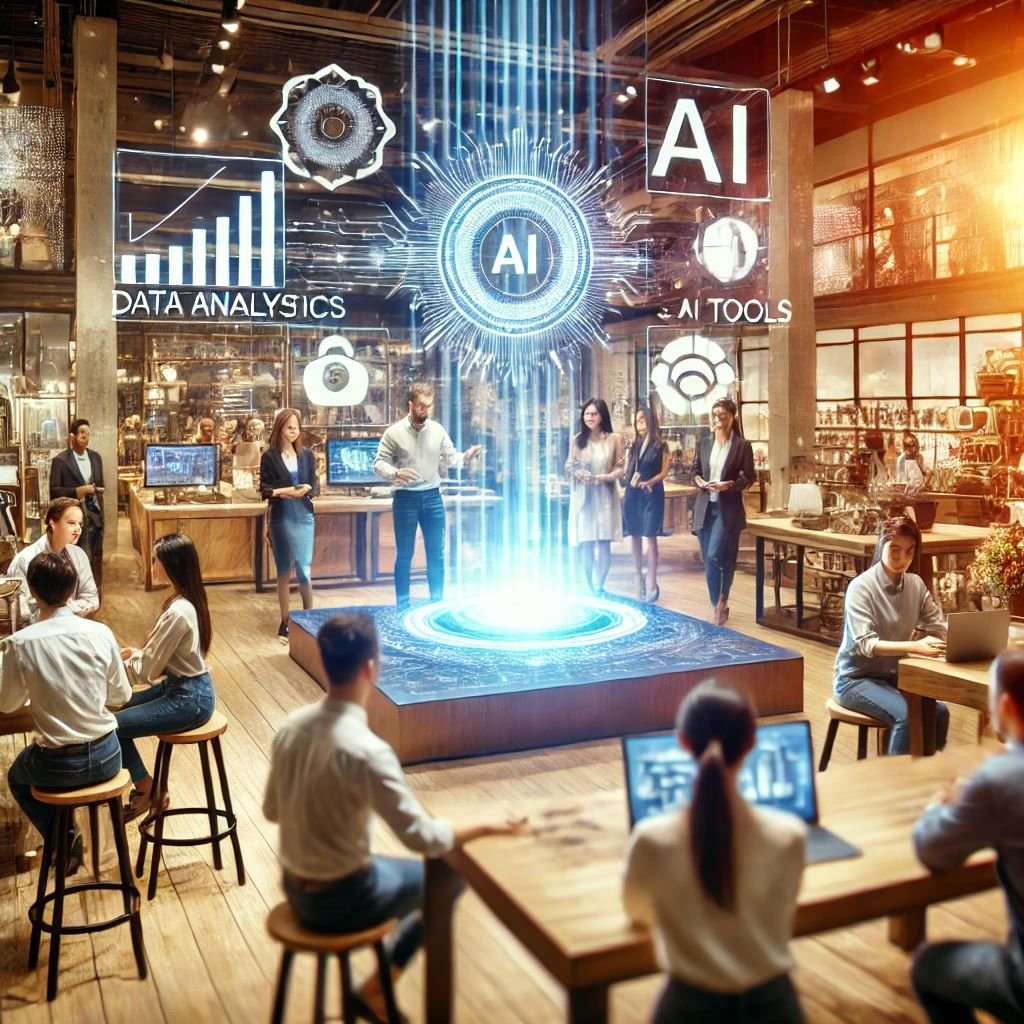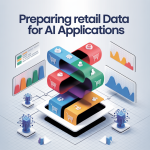
Focus on Training – Leadership and Skill Development for AI-Enhanced Retail
The integration of AI into retail operations has redefined roles and expectations across the industry.
While AI excels in data analysis and automation, it cannot replace the nuanced leadership and decision-making skills required to manage teams, engage customers, and drive innovation.
As a retail management expert, focusing on training your teams to navigate the AI-enhanced environment is essential.
Here’s a deep dive into how you can provide impactful leadership and skill development training:
Key Training Areas for Retail Teams
1. Understanding AI Systems
- Why It’s Important: Many retail employees and managers may feel intimidated or resistant to AI tools due to a lack of understanding.
- What to Train:
- Basics of AI functionality and its role in retail (e.g., inventory optimization, customer segmentation).
- How to interpret AI-generated data and use it for decision-making.
- Limitations of AI and the importance of human oversight.
- Delivery Method: Interactive workshops, hands-on practice with AI tools, and accessible resources like explainer videos or user manuals.
2. Soft Skills Development
- Why It’s Important: AI cannot replicate empathy, creativity, or interpersonal skills, which are critical for team management and customer engagement.
- What to Train:
- Communication and active listening for resolving customer issues and team conflicts.
- Emotional intelligence to better understand and support team members and customers.
- Creativity to innovate beyond AI-generated recommendations.
- Delivery Method: Role-playing scenarios, peer feedback sessions, and guest speakers specializing in emotional intelligence.
3. Ethical Use of AI
- Why It’s Important: Misuse of AI, such as biased recommendations or perceived invasions of privacy, can harm the brand’s reputation.
- What to Train:
- Identifying and mitigating biases in AI tools.
- Data privacy laws and ethical considerations in AI applications.
- Communicating AI-driven decisions transparently to customers and stakeholders.
- Delivery Method: Case studies, policy development workshops, and ongoing ethical audits.
4. Change Management
- Why It’s Important: Transitioning to AI-enhanced operations can be challenging for teams accustomed to traditional methods.
- What to Train:
- How to adapt to new workflows involving AI tools.
- Overcoming resistance to change by emphasizing the benefits of AI.
- Strategies for maintaining morale during transitions.
- Delivery Method: Leadership coaching, team-building exercises, and clear communication of the value AI brings to individual roles.
5. Advanced Problem-Solving and Critical Thinking
- Why It’s Important: While AI identifies trends and insights, humans are essential for addressing ambiguous or complex challenges.
- What to Train:
- How to combine AI insights with human judgment for holistic decision-making.
- Creative problem-solving techniques for situations AI cannot handle (e.g., unexpected market shifts or customer behavior anomalies).
- Scenario planning for future-proofing strategies.
- Delivery Method: Collaborative brainstorming workshops and simulation-based training.
Developing Leadership Skills for AI-Driven Teams
1. AI-Enhanced Leadership
- Train leaders to use AI tools to manage teams more effectively (e.g., using AI to predict staffing needs or analyze team performance trends).
- Focus on balancing data-driven decisions with a human-centric approach.
2. Empowering Teams
- Teach managers how to empower employees to use AI confidently and creatively.
- Encourage a culture of continuous learning, where team members feel comfortable exploring and adopting new technologies.
3. Feedback and Growth
- Help leaders develop systems for providing constructive feedback that integrates AI insights with personal coaching.
- Train managers to identify skill gaps and recommend targeted development opportunities for their teams.
Implementing Training Programs
1. Onboarding Programs
- Include AI-specific modules in onboarding for new hires to familiarize them with tools and processes early.
2. Continuous Learning
- Offer ongoing training sessions to keep teams updated on AI advancements and best practices.
- Create an e-learning platform with courses tailored to different roles.
3. Mentorship Programs
- Pair experienced managers with newer team members to foster knowledge sharing about both AI systems and traditional retail practices.
4. AI Literacy Certification
- Develop a certification program to ensure team members reach a standard level of AI competency.
Measuring Training Effectiveness
- Use KPIs like:
- Increased adoption and effective use of AI tools.
- Employee satisfaction and reduced resistance to AI.
- Improved customer satisfaction metrics tied to human interactions.
- Enhanced team productivity and innovation.
Final Words
Training is the bridge between AI tools and the people using them.
By equipping teams with the skills to collaborate effectively with AI, retail businesses can enhance efficiency while maintaining the human touch that customers value.
As a retail management expert, focusing on these training initiatives not only strengthens your team’s capabilities but also solidifies your role as an essential leader in the AI-driven retail landscape.


